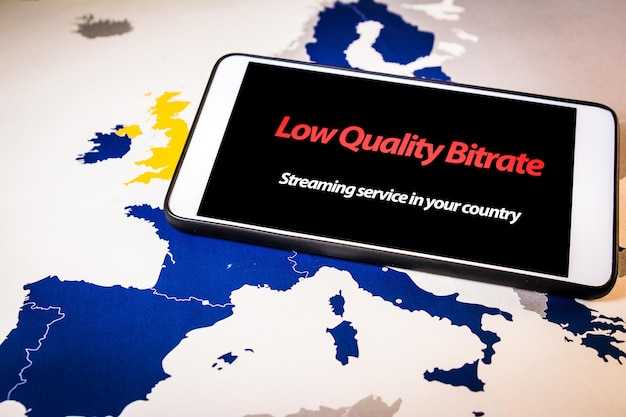European carriers have long integrated secure online order workflows into complex logistics networks across the continent. This article presents a concise set of case studies that reveal how operators like parcel specialists and postal networks implement scalable controls to protect customers and reduce loss, while maintaining fast delivery times.
We examine how multi-factor authentication, dynamic risk scoring, és end-to-end encryption are deployed across web and mobile channels, and how carriers coordinate with retailers to secure the order-to-delivery lifecycle.
Cross-border operations confront customs, regulatory, and privacy challenges. The case studies illustrate how carriers align with GDPR practices, data localization, and secure data sharing, enabling compliant and efficient European online orders.
The selected cases demonstrate improvements in order visibility, valós idejű nyomon követés, és fraud reduction without compromising speed, leading to higher customer satisfaction and lower return rates.
Readers will gain practical guidance on designing secure order paths across diverse markets, selecting tools, and building collaboration frameworks that scale with increasing online demand.
Fraud Risk Evaluation and Real-Time Scoring for Online Carrier Orders
Fraud risk evaluation in online carrier orders requires a structured, data-driven approach that combines rule-based checks with machine learning to assess transaction and shipment risk in real time. In Europe, cross-border shipments add complexity through regulatory variations, unfamiliar addresses, and evolving fraud patterns that exploit route differences. A real-time scoring framework minimizes manual reviews while preserving service levels for legitimate customers.
Data inputs span order attributes, customer history, device and network signals, payment signals, and shipment-specific indicators. Examples include billing versus shipping address mismatches, IP geolocation not aligning with declared shipping country, device fingerprint and browser signals, velocity and frequency of orders from a payer, new customer status, and payment method risk indicators (BIN country, AVS/CVV mismatches, cardholder name variations). Additional carrier-specific signals cover preferred carriers, requested service levels, and pack sizes that diverge from typical patterns.
Modeling combines deterministic rules with probabilistic scores. Rule-based engines catch obvious red flags (high-risk countries, known fraud patterns, rapid address changes) while supervised models learn complex relationships from historical outcomes. Features incorporate time-based aggregates (last 24 hours orders per payer), geographic diversity of destinations, carrier and service mix, and edge-case indicators such as repeated failed payments before success. Outputs are calibrated into a single risk score on a 0–100 scale with interpretability for human operators.
Real-time scoring architecture is event-driven and low-latency. Data streams come from e-commerce checkout, payment gateway, identity verification providers, and carrier systems. Feature extraction executes in microservices, with a feature store ensuring consistent inputs for online inference. Online models produce a risk score within a few hundred milliseconds, complemented by asynchronous enrichment (recent shipment history) loaded in parallel. The system includes fallbacks and circuit breakers to maintain order flow during data outages.
Decision framework uses thresholds and human-in-the-loop. Low risk scores may be auto-approved; medium risk triggers automated review with case notes and required verifications; high risk results in hold or decline with rationale and escalation to fraud operations. Escalations automatically generate case files with evidence from identity verification results, payment and device signals, and shipment risk indicators. The framework aims to minimize false positives to avoid delaying legitimate shipments.
Privacy, compliance, and governance are embedded. Data minimization, consent management, and GDPR-aligned retention policies govern data used for scoring. Access controls, audit trails, and model explainability are enforced. Third-party risk providers are integrated under contractual safeguards and data processing agreements. Data residency considerations are observed where feasible to meet European requirements.
Operational outcomes and European case study highlights show integrated real-time scoring reducing fraudulent orders and chargebacks while preserving legitimate throughput. Carriers report faster onboarding, smoother cross-border flows, and increased trust with merchants and customers. Shared risk scoring across carrier networks enables consistent decisions and reduces duplicate investigations. Ongoing monitoring and regular retraining with fresh labeled data sustain model performance amid evolving fraud tactics.
Secure Payment Architectures for European Carriers: 3D Secure, Tokenization, and PCI Compliance

European carriers face complex payment requirements driven by PSD2 and Strong Customer Authentication (SCA), cross-border card schemes, and a high risk profile associated with travel and logistics services. A robust security architecture that combines 3D Secure, modern tokenization, and strict PCI DSS controls reduces fraud, lowers PCI scope, and preserves swift order fulfillment across diverse markets. Implementations must balance frictionless customer experiences with rigorous authentication and data protection guarantees.
3D Secure (3DS) provides an authentication layer between the cardholder, the merchant, and the issuer. In a 3DS2-enabled flow, the merchant initiates the transaction, which is redirected or embedded into an authentication channel where the issuer can perform risk-based verification. The system supports both frictionless authentication for low-risk transactions and challenge flows when stronger verification is required. Device fingerprinting, passive data collection, and dynamic risk assessment enable merchants to confirm cardholder identity without unnecessary disruption for compliant transactions. For carriers operating cross-border routes and temporary payment revenue streams (seasonal sales, group bookings, or last-mile services), 3DS2 helps meet SCA mandates while preserving conversion rates by selecting the appropriate authentication path per transaction.
Implementation considerations for carriers include integration with a trusted Payment Service Provider (PSP) or gateway that supports 3DS2 in Europe, compliant directory and access to the issuer’s ACS (Access Control Server) and the card network’s Directory Server. UI and flow design should minimize customer effort, opting for in-app or browser-based seamless authentication where possible and providing clear messaging for required actions. Risk-based rules should be tuned to the carrier’s risk appetite and customer base, with the ability to adapt to rapid changes in cross-border travel patterns and payment preferences.
Tokenization replaces sensitive PAN data with non-sensitive tokens that have no exploitable value if breached. In a typical European carrier architecture, card data is captured by the merchant or PSP, transmitted over secure channels, and immediately replaced with a token stored in a secure token vault managed by a PCI-compliant service provider. Tokens are used for all subsequent payment workflows, including card-on-file subscriptions, invoice settlements, and recurring bookings, while the original PAN remains outside the merchant environment. This approach reduces PCI DSS scope, simplifies data handling, and limits exposure during processing, storage, and transport.
Tokenization also supports flexible use cases such as token renewal, tokenization of virtual cards, and merchant- or network-level tokens that can be constrained to specific merchants, payment methods, or currencies. For European carriers dealing with fare packages, loyalty integrations, or B2B transport services, tokenization enables secure storage of customer preferences and faster checkout experiences without re-entering sensitive data. When combined with 3DS2, tokenized environments maintain strong authentication while keeping card data out of the merchant’s systems, which is essential for compliance and operational resilience across multiple markets.
PCI Compliance establishes the baseline for safeguarding cardholder data. The PCI Data Security Standard (PCI DSS) outlines twelve requirements focused on building and maintaining secure networks, protecting data, managing vulnerabilities, monitoring access, and sustaining an information security program. For European carriers leveraging 3DS2 and tokenization, the PCI scope is typically reduced because the merchant never stores full PANs and utilizes external vaults and networks designed to handle card data securely. Depending on the deployment model, many carriers qualify for the abbreviated Self-Assessment Questionnaire (SAQ), such as SAQ A-EP or SAQ A, rather than full SAQ D coverage; however, precise scope depends on how data flows are implemented and who handles card data directly.
Key PCI considerations include ensuring secure network segmentation, strong encryption for data in transit and at rest, proper key management, and rigorous access controls. Regular vulnerability scanning, penetration testing, and monitoring of third-party service providers are mandatory components of ongoing compliance. With 3DS2 and tokenization, merchants and carriers should document data flow diagrams (DFD), perform periodic risk assessments, and verify that third-party providers maintain PCI DSS attestation of compliance, timely incident response, and explicit data processing agreements. Privacy protections aligned with GDPR are essential when processing cross-border customer data, including clear consent mechanisms and minimal data retention for payment-related information.
Architectural blueprint and governance practices should emphasize end-to-end security: client-side encryption where feasible, secure transmission via TLS 1.2+ (preferably TLS 1.3), and strict validation of tokens and authentication results before processing payments. Operational controls include segregated environments for token vaults and merchant systems, redundant failover for payment channels, and real-time monitoring of authentication outcomes, fraud signals, and anomaly detection. By integrating 3DS2, tokenization, and PCI DSS discipline, European carriers can achieve resilient payment ecosystems that satisfy regulatory expectations, reduce fraud exposure, and deliver trustworthy, efficient experiences to customers across multiple transportation modes and markets.

 European Carriers Secure Online Orders Case Studies">
European Carriers Secure Online Orders Case Studies">
